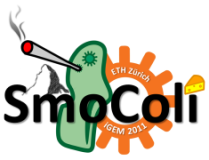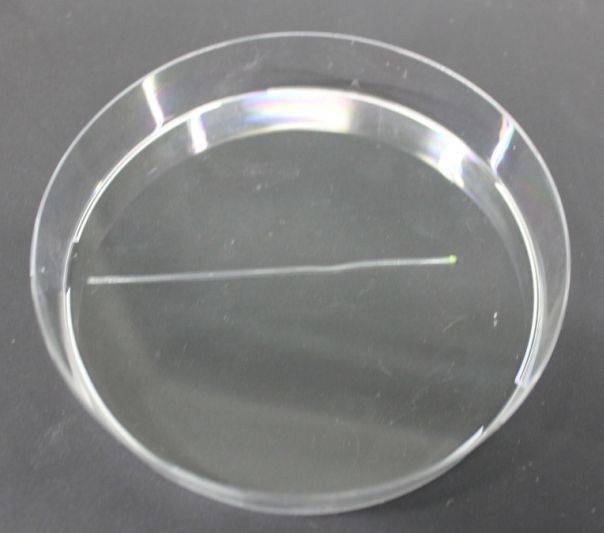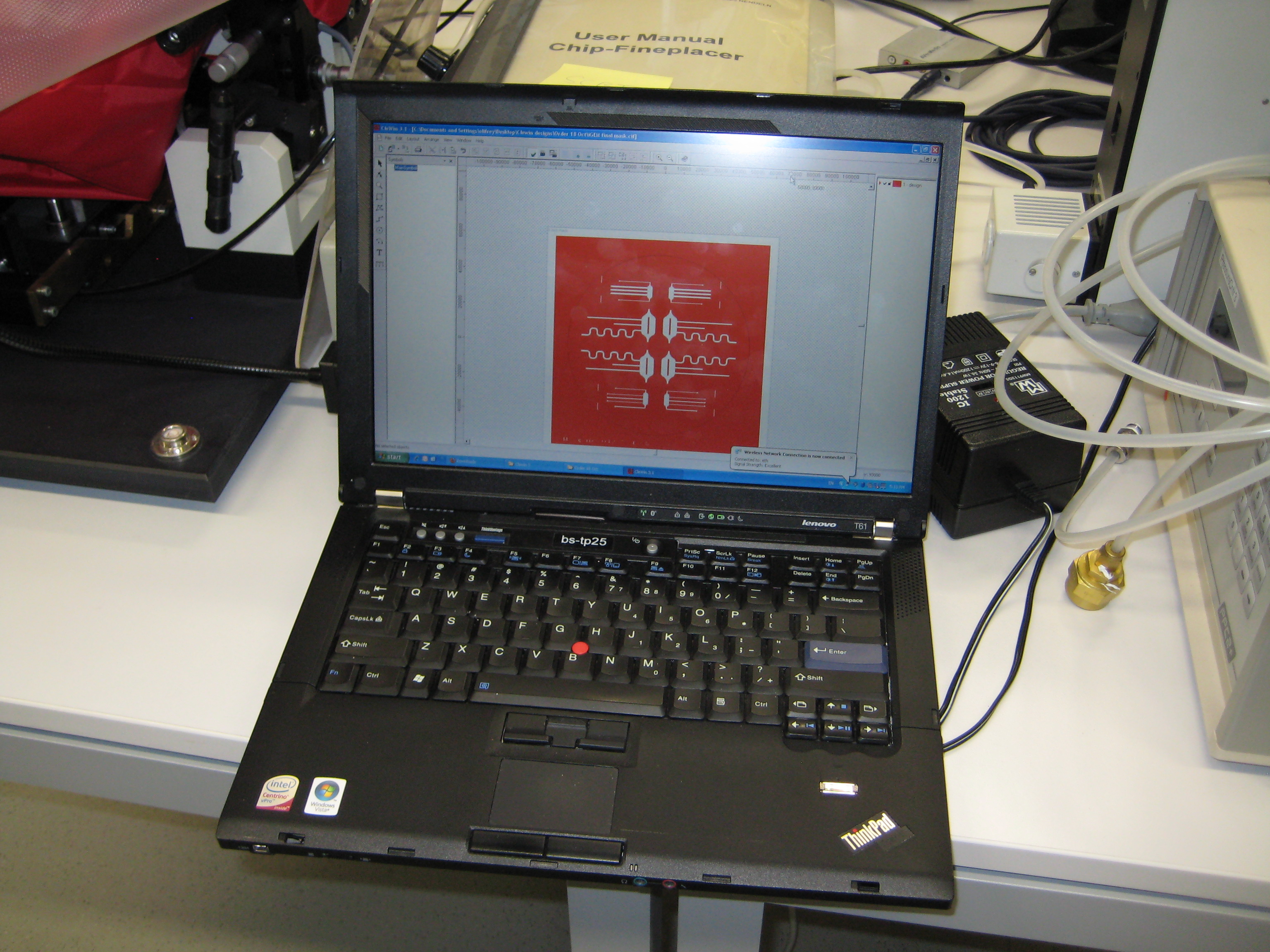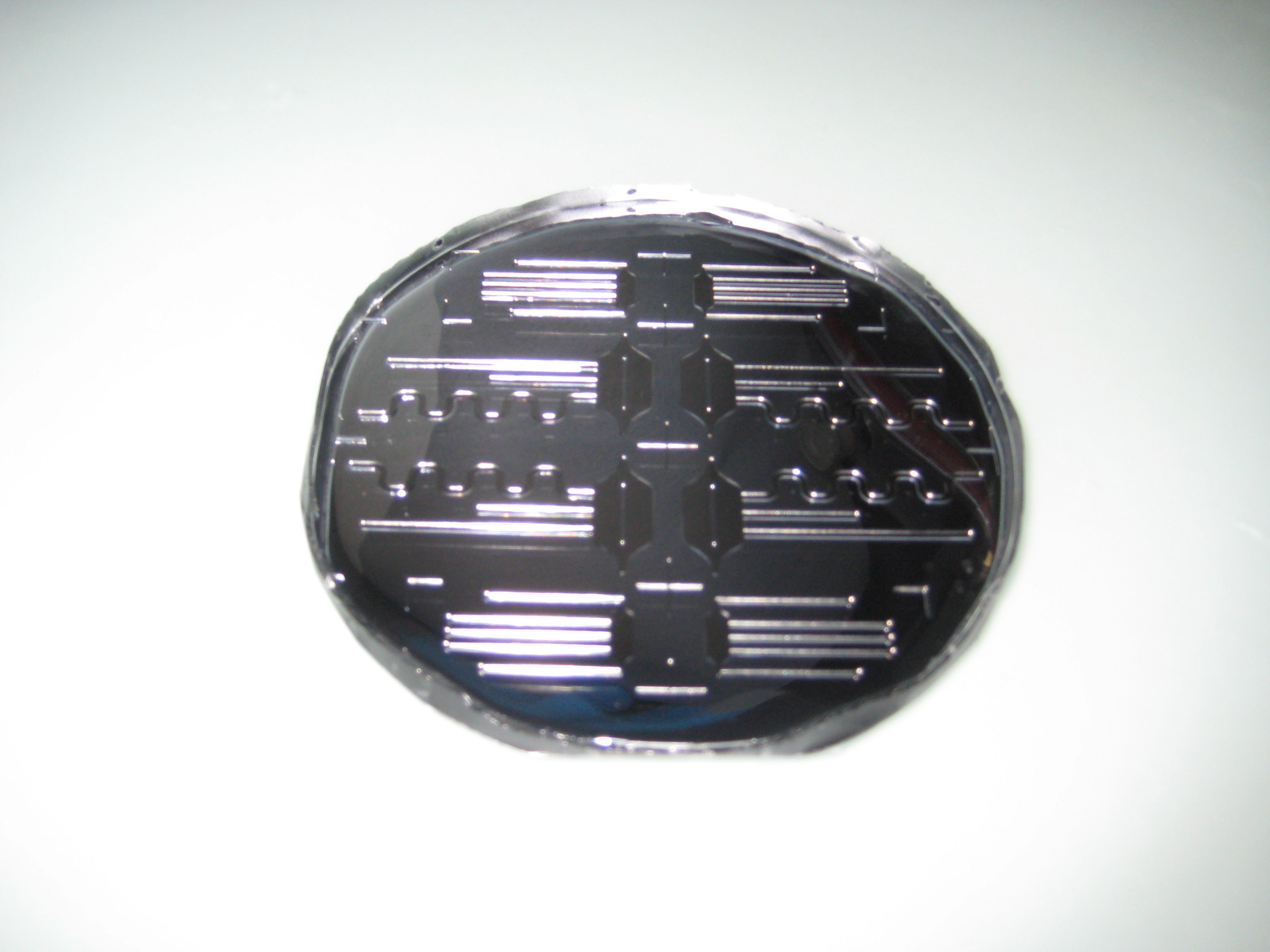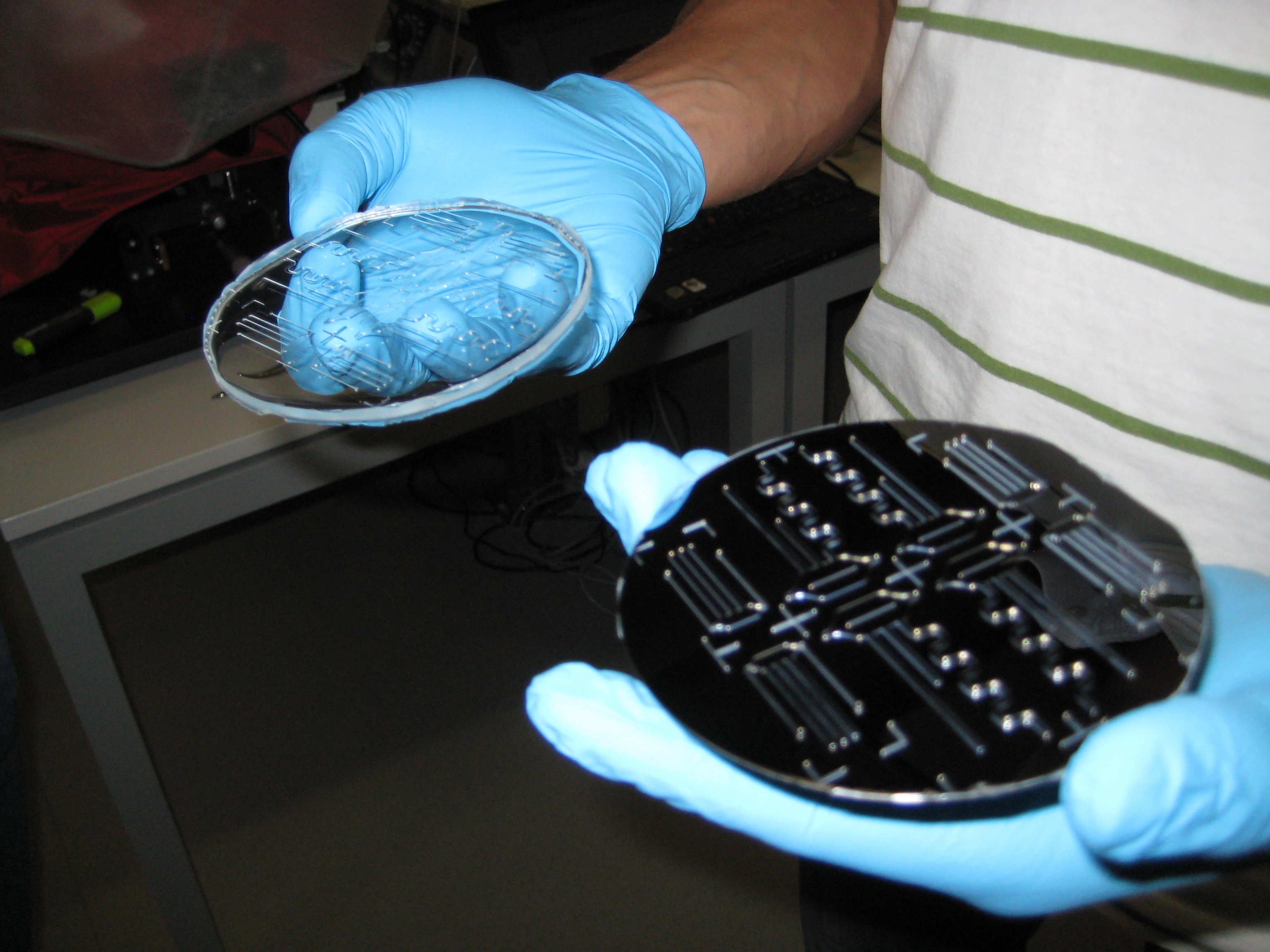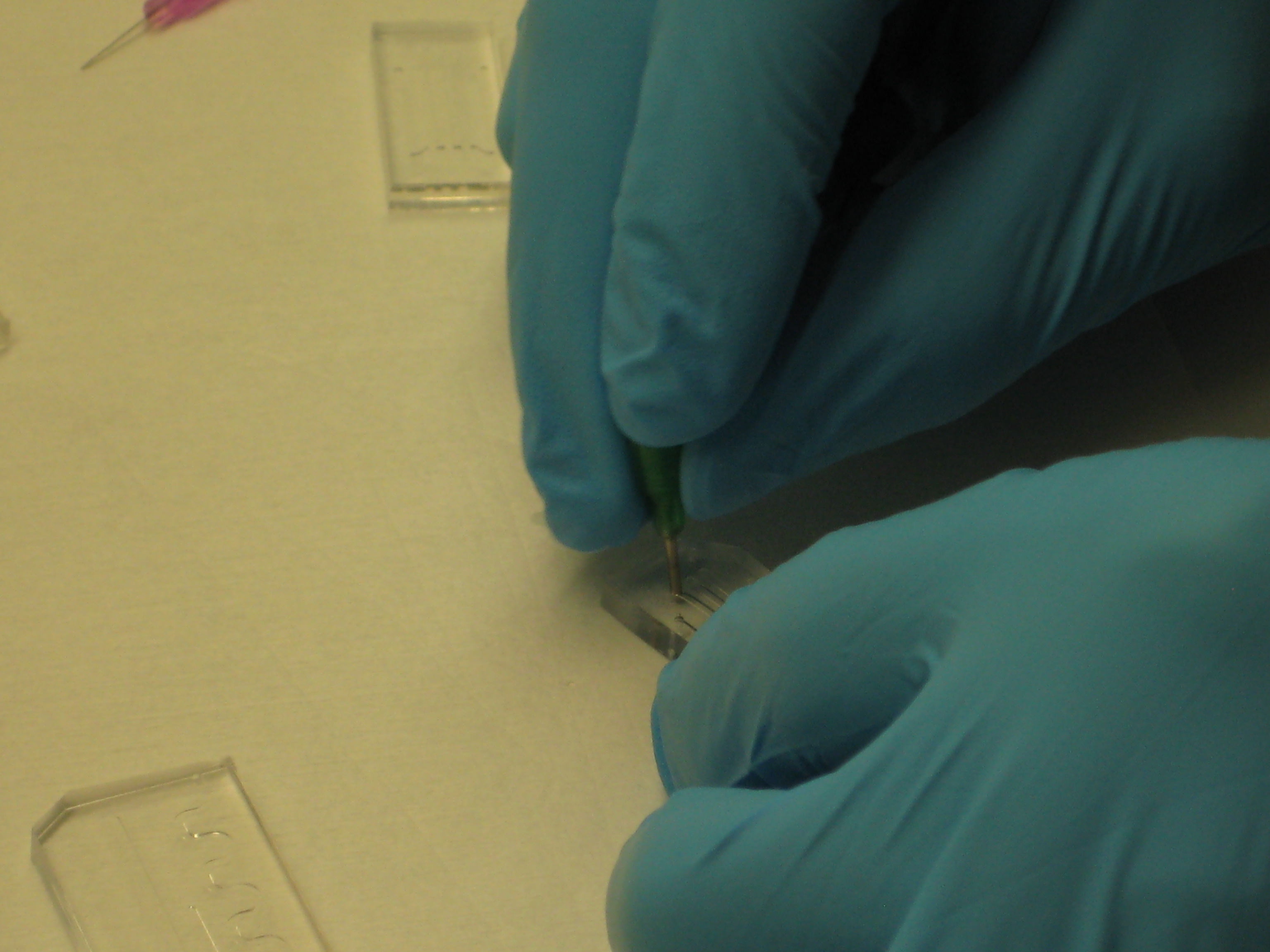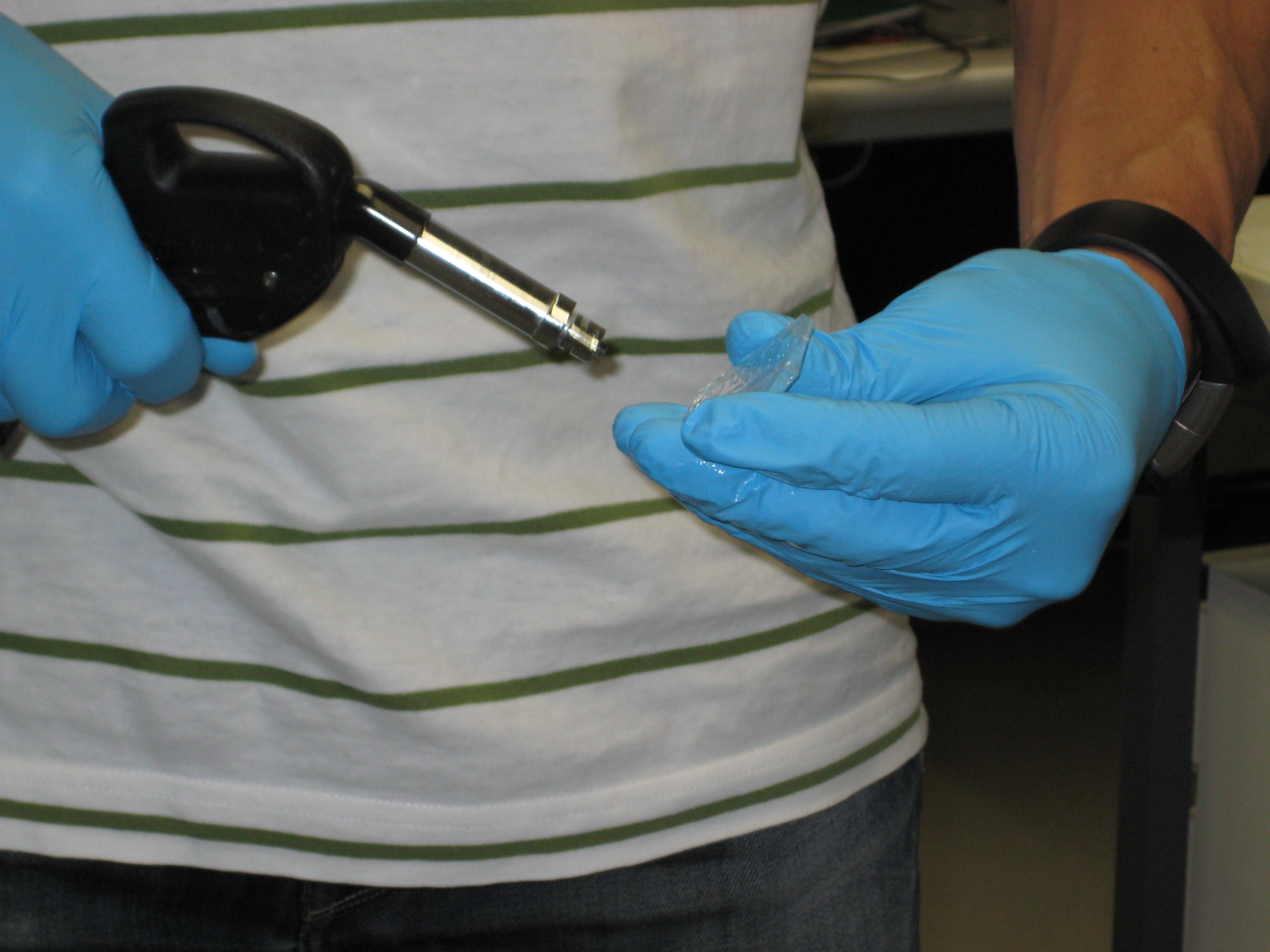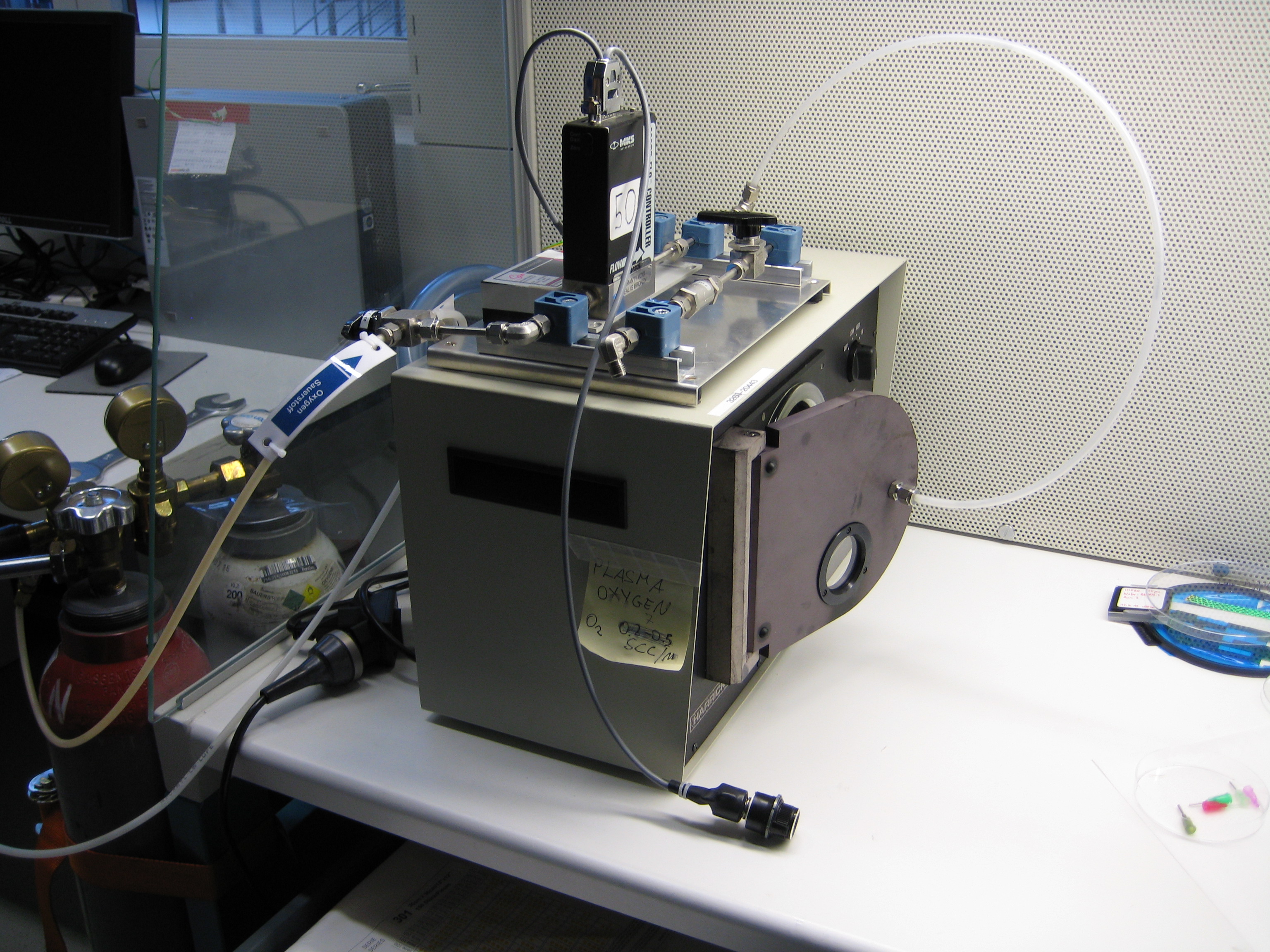Team:ETH Zurich/Process/Microfluidics
From 2011.igem.org
| Development of Channel Design |
| ||
|
We figured out relatively early that we need some kind of channel to establish the acetaldehyde or xylene gradient required for SmoColi (see Circuit Design). However, there were several different possible channel designs, and the final design evolved through an iterative series of design steps and design validations. The first designs were validated based on vast simulations, the final design furthermore by biological experiments in the lab (see Systems Validation). | |||
Microfluidic channel with flow and recycling of the mediumWe came up with two different possible microfluidic channel designs, both involving immobilized cells and a flow of toxic molecule in medium through the channel. By having a flow and degradation, we could obtain nice gradient of the toxic molecule. Furthermore, with the flow our cells would be constantly supplied with nutrients from the medium.
This channel design consists of two parts: A PDMS plate with regular cubic "pixels" that is filled with cells in agarose by letting the cell-agarose solution flow over the pixels FROM THE TOP by gravity. The cell-agarose liquid is then cooled down and the solidified surplus cell-agarose gel scraped off. The second part is a larger PDMS channel, which is several pixels wide and several pixels high. It is then laid on top of the pixel structure and clamped tightly in order to create a seal. Although this setup is rather complex, it has the advantage of having immobilized cells and thus being more robust, i.e. we could vary flow speeds or even put aerosol in the channel without the cells being washed out. Additionally, cell density can be varied very easily in this design as the cells can be diluted before being immobilized in agarose.
This channel design only consists of one part: A PDMS channel that is fixed onto a glass carrier. The PDMS channel contains pockets which "trap" the cells given a constant flow from the direction of the "open end" of the pockets. This channel design does not have the advantages of the above one, i.e. it is not as robust and cell density cannot be reliably varied. However, manufacturing it is a standard process and thus is easier. Problems with these design variants: A problem with both of these designs is that for the AHL-based RFP alarm to work, recycling of the flow back into the channel would be required. AHL-producing cells are only those "after" the GFP band, i.e. those at lower acetaldehyde concentration than the band concentration range. As long as the GFP band has not arrived until the end of the channel, we should make sure there is AHL everywhere in the channel, so that it inhibits RFP production in every cell. Modeling showed that AHL can not simply diffuse "backwards" against the flow, but by having a recycling all the cells would be supplied by AHL and thus the alarm won't be activated before time. However, Since the tubing and pumps would have very high volumes compared to the channel volume, the AHL signal would be diluted to the point where no detection is possible anymore. Also, several pumps would be required to accomplish this, further complicating the process design and making it more error-prone. |
Further improving the channel materialWith the tube live imaging is not possible, that´s why we develop our channel design further. To image the channel at the top and bottom of our channel a glas slide is needed. The channel itself we tried to build up by using a plastic mask and casting the boundaries with different materials. We tried Two-component glue, Silicon and molten parafilm. Two-component glue turned out to be toxic for our cells. Silicon and molten parafilm in contracts seen to be adequate for our channel. At the same time we tried something more frequently used, Polydimethylsiloxane (PDMS) for the channel. |
Final System with PDMS channel |
 "
"
